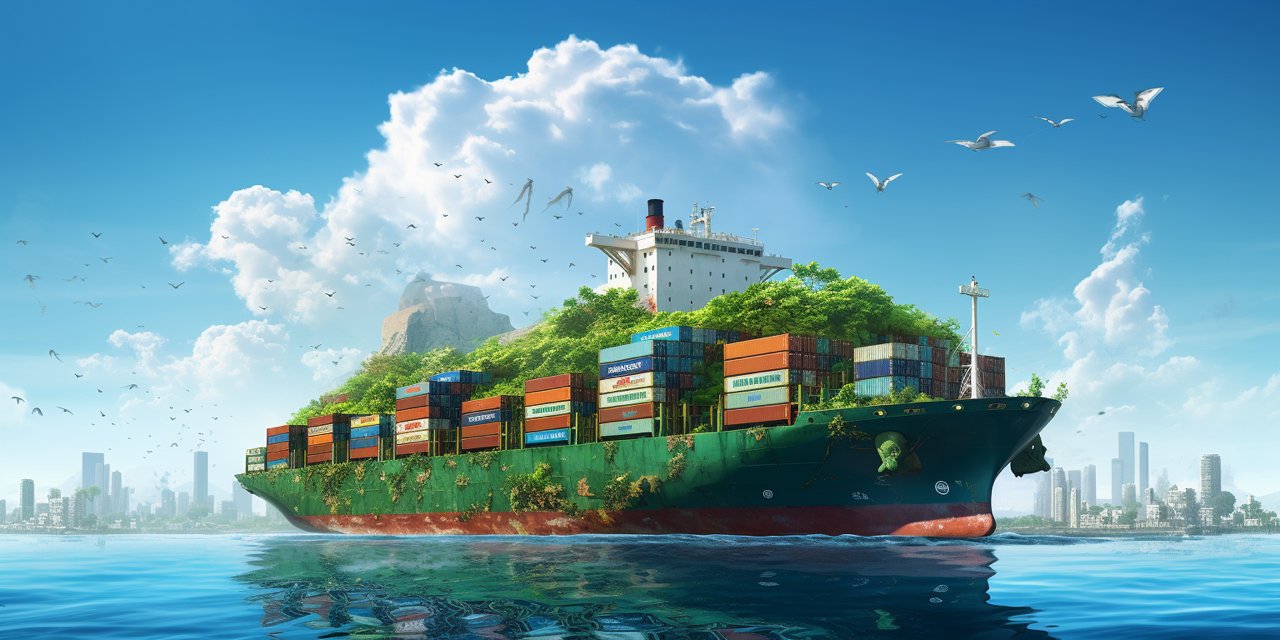For the industry, CO2 emissions are one of the most sensitive issues, given the scale, as 2.5% of global emissions are related to ocean freight. This percentage includes emissions arising from logistics processes, transportation operations, and the utilization or use of the cargo.
An important nuance is the actual impossibility of directly and fully tracking emissions for each company: Scope 3 category emissions are not directly controlled by the company, but by carriers who are intermediaries in logistics processes.
The extensive networking of logistics processes between many parties also leads to issues of transparency and ease of tracking, for example, CO2 emissions along transportation routes. Regional and international environmental practices, rules, and regulations are designed to ensure that these processes are optimized and visible. Turning to the issue of greenhouse gas emissions in shipping.
International regulations
International Maritime Organization Regulations
The IMO (International Maritime Organization) is the relevant UN agency that aims to regulate international shipping processes, thereby contributing to the protection of ecology, the environment, the safety of maritime transportation, and the efficiency of the industry as a whole.
United Nations Framework Convention on Climate Change
A worldwide accord has been established for countries to unite in addressing the issue of climate change. Moreover, the UNFCCC has made an important regulation in the Paris Agreement. It says that the temperature shouldn't go over 1.5 degrees Celsius.
Energy Efficiency Existing Ship Index and Carbon Intensity Indicator
They are IMO standards. The first one is designed to measure the energy efficiency of vessels and develop minimum emission reduction requirements. The second measures the carbon escalations of a vessel, which sets outflow diminishment targets for shipping based on the type and size of vessels.
MARPOL Annex VI
The IMO has developed an international treaty to disseminate rules for the prevention of air pollution by emissions of sulfur oxides, nitrogen oxides, and ozone-depleting substances from vessels resulting from sailing.
Energy Efficiency Design Index
The IMO has developed a regulatory framework for mandatory energy efficiency regulations for newly built vessels of various sizes and types. In this way, the organization encourages the global community to use technologies that help reduce greenhouse gas emissions and fuel consumption.
Ship Energy Efficiency Management Plan
It is a requirement for the development and energy efficiency of ships developed by the IMO. To achieve these goals and reduce emissions, encourage the use of technologies to optimize and reduce fuel consumption. Among others, the following are specified: advanced hull and propeller maintenance, and optimized planning of routes and voyages.
Greenhouse Gas Protocol
In order for companies to more easily estimate and track emissions of various types from maritime shipments, the Greenhouse Gas Protocol (GHG) reporting standard has been widely recognized.
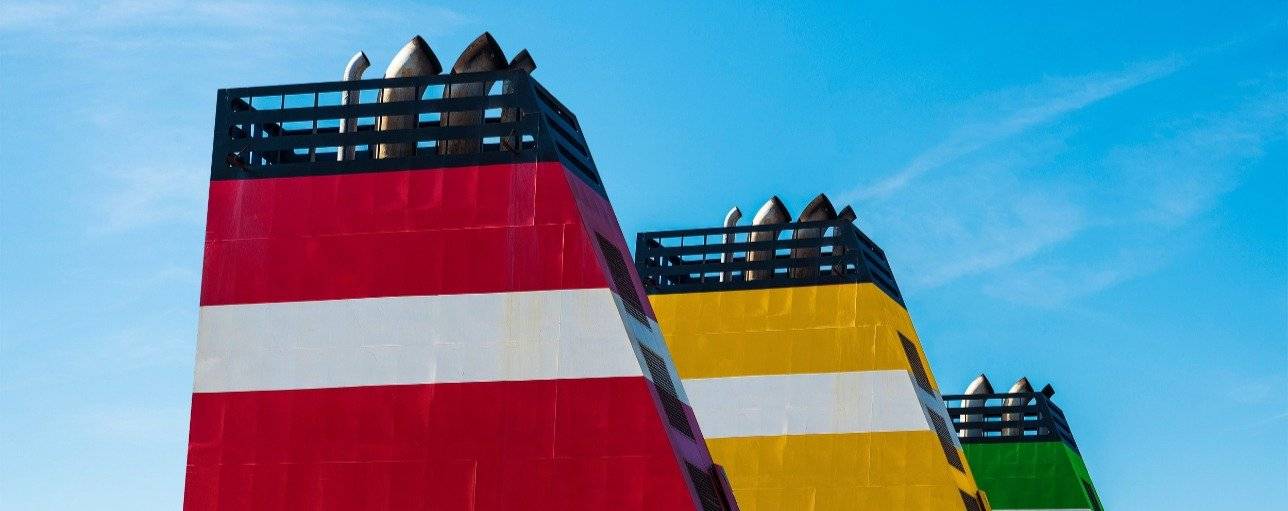
Carbon Offsetting and Reduction Scheme for International Aviation
For the international aviation industry, with the aim of reducing carbon emissions, a global program was approved that facilitates the purchase of carbon credits for approved projects by airlines, which should in turn reduce emissions.
Major regulations in the United States
SmartWay Program by the EPA
The program was established by the EPA (Environmental Protection Agency). In this way, the program provides companies that have implemented green technologies in their processes with additional resources to optimize and improve logistics efficiency.
Clean Trucks Plan
This initiative is a regulatory one that promotes the fuel efficiency of trucks. Trucks manufactured from 2027 onward will be subject to these emission standards and the introduction of green technologies, such as low-emission vehicles.
U.S. National Blueprint for Transportation Decarbonization
According to the plan, the development of the electric transport industry, sustainable and green fuels, and investments in public transport should result in a strategy to complete the carbon-free transport sector by 2050.
California Air Resources Board (CARB) Regulations, including the Low Carbon Fuel Standard
The Regulations and the Standard set a target for fuel producers to gradually reduce emissions and replace them with sustainable fuels.
Major regulations in Canada
Transport Canada’s Emission Regulations
The controls advance the improvement of transportation within the nation by building up benchmarks for diminishing emissions from different modes of transportation. Transport Canada’s Emission Regulations cover the range of vehicle fuel productivity and the presentation of green innovations and activities.
Major regulations in Europe
EU Ship Recycling Regulation
To establish the rules for the use of hazardous materials on board vessels and for the disposal and recycling of the vessels themselves, the EU has implemented this Regulation.
EU Monitoring, Reporting, and Verification Regulation
For vessel owners in the ports of the European Union, this Regulation requires monitoring and reporting of statistics on greenhouse gas emissions from large vessels.
EU Emission Trading System
The system is based on the principle of setting a limit on the amount of emissions allowed for companies. Otherwise, they will have to buy quotas for emissions and greenhouse gases.
Major regulations in the Asia-Pacific Region
China’s National Carbon Market
This carbon trading system allows companies to trade carbon credits, which is intended to encourage emissions reductions.
Overcoming technologies: How to deal with carbon emission standards in shipping?
In line with international standards, logistics providers are adapting their supply chain processes to be more environmentally friendly. The example of the scrubber, which has become commonplace as a result of the IMO 2020 regulation, shows how global companies have embraced the use of new technologies to reduce emissions.
Marine fuels and fuel oils, which are essential for ships to sail, contain high levels of sulfur, which pollutes the environment when burned. However, a scrubber is a device that cleans solid and gaseous substances from such impurities.
Furthermore, eco-initiatives and "green technologies" are providing enhanced data on carbon emissions on international routes.
When carrying out day-to-day operations in logistics and trade processes, it is important to have information on the estimation of detailed carbon emissions' data; statistics are modeled for each type of transport and specific types of port pairs, which are used to plan procurement and transportation of cargo.
Given the global and regional regulations mentioned in the article above and the increasing popularity of convenient green technologies for logistics, you can develop your own CO2 calculator to quickly and individually calculate the amount of emissions generated by certain types of shipments.
This is possible using the API of the SeaRates Distance & Time tool, with port-to-port data on voyage distance (mileage), transit time, and average speed that you can set.
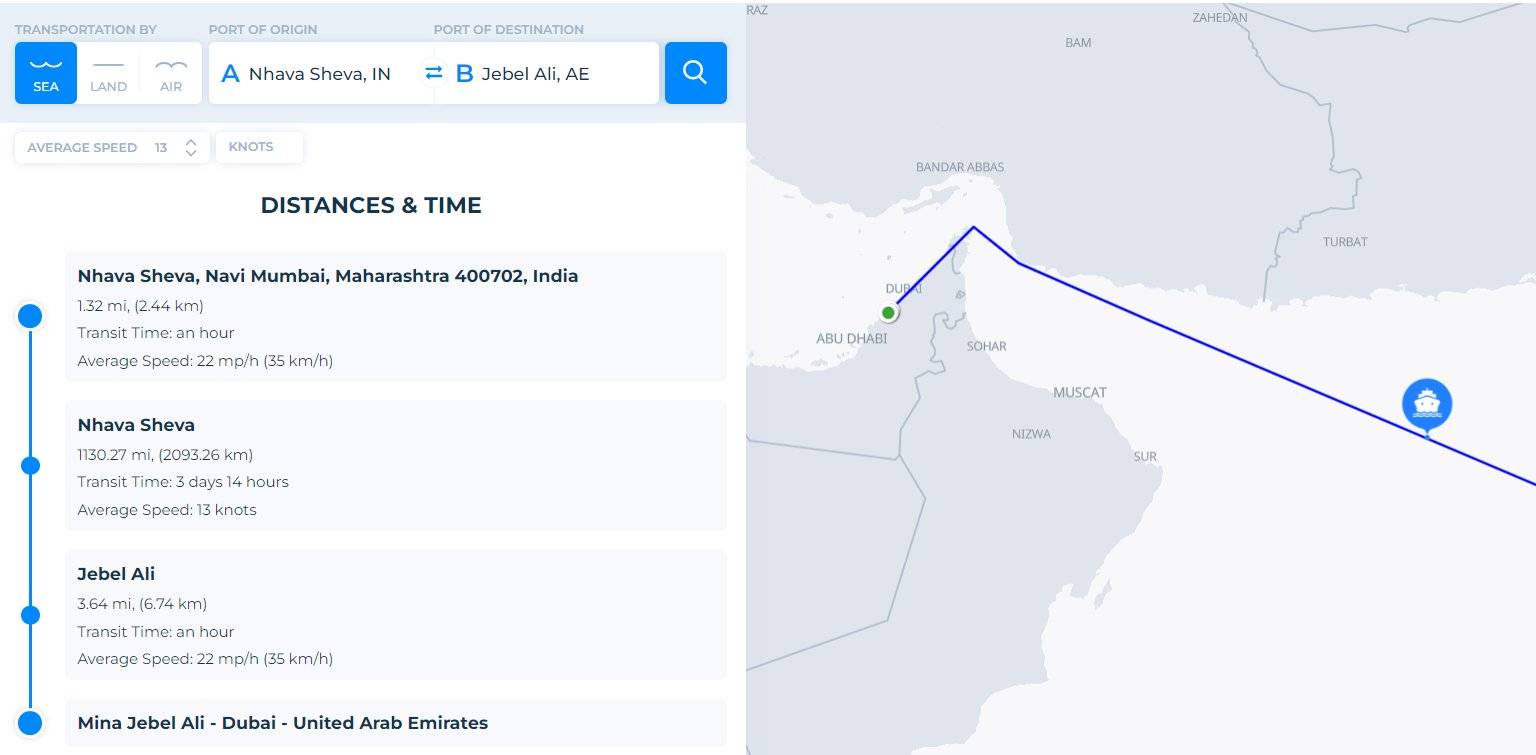
You also receive historical data on the transit time of shipments by various shipping lines along the specified route, which is needed to calculate carbon emissions.
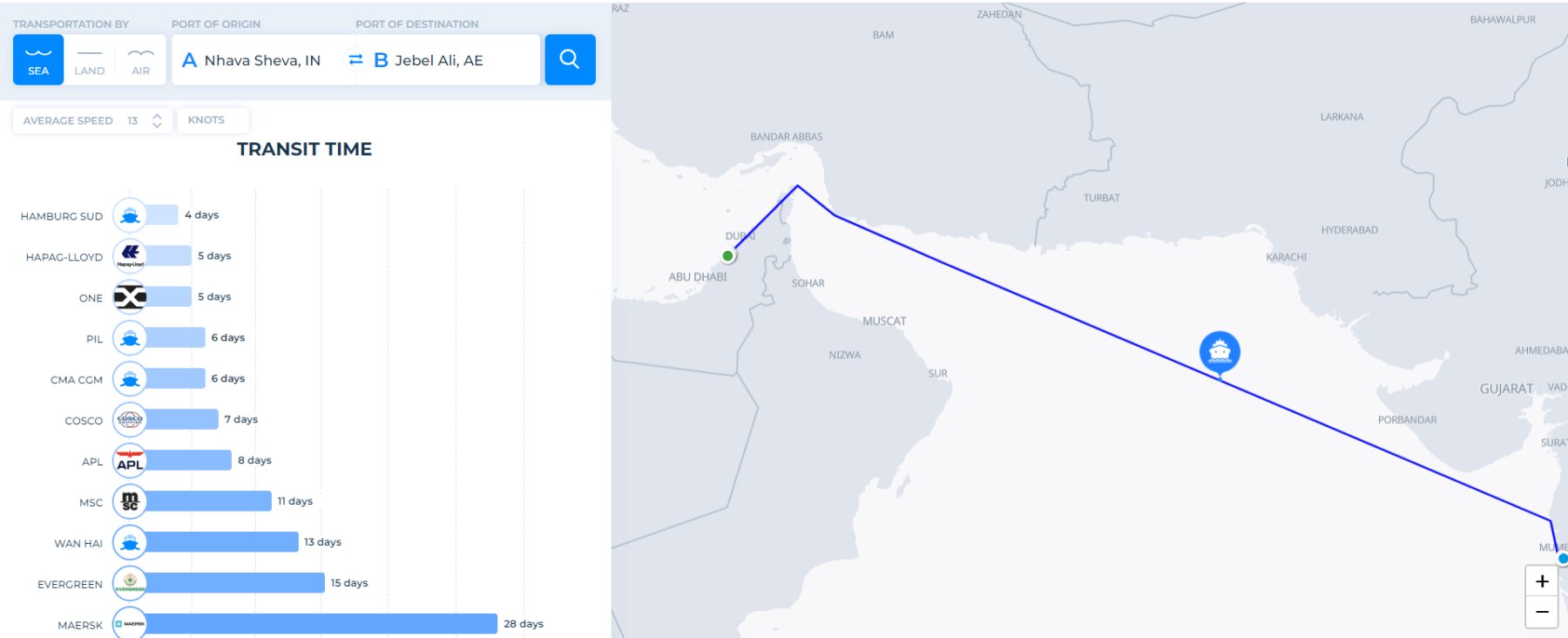
Additionally, the Logistics Explorer tool calculates CO2 emissions on shipping routes. Simply click on the rate selection to book a carriage using technologies that reduce carbon emissions along the route.
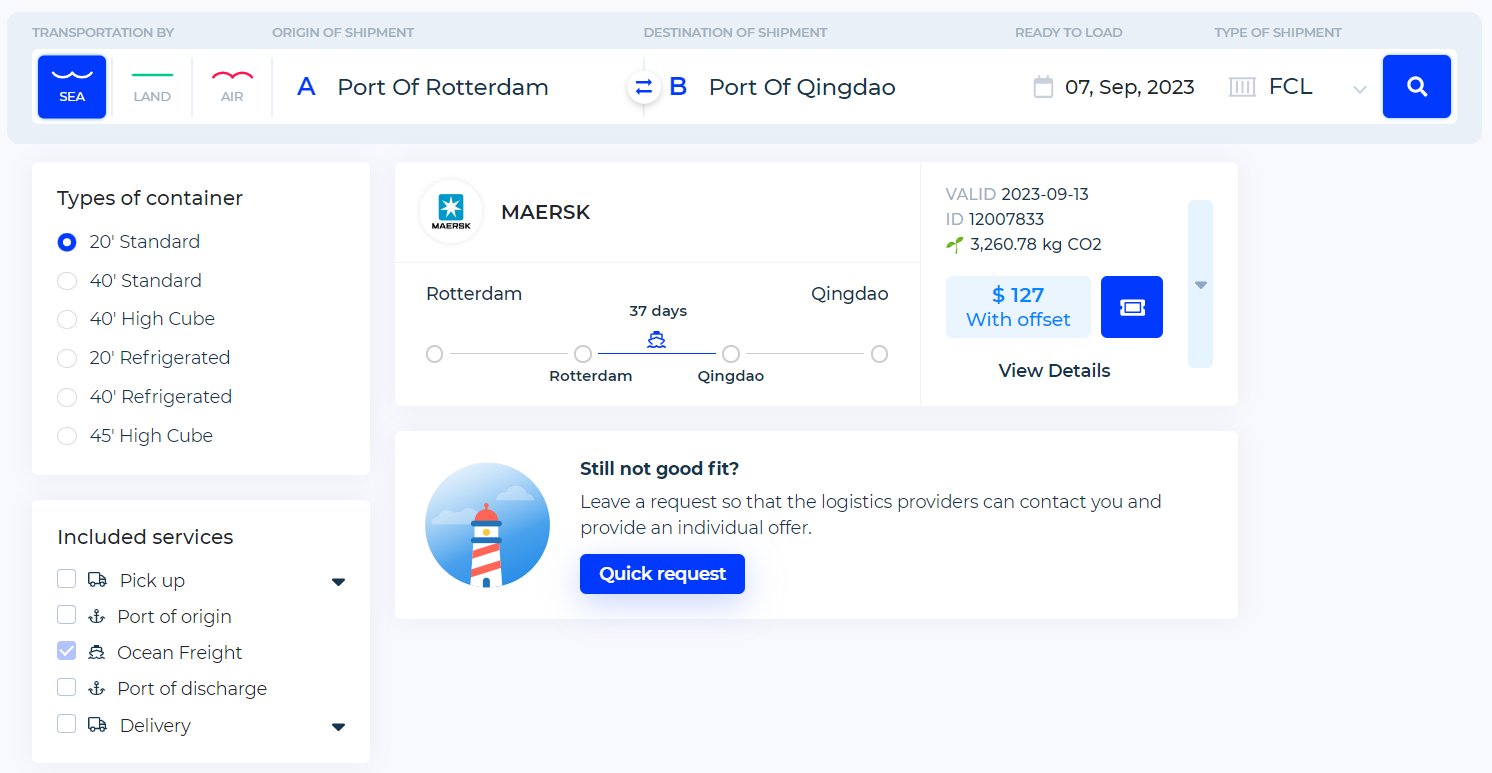
Also, you can always choose a standard freight rate that does not cover CO2 emission reduction services.
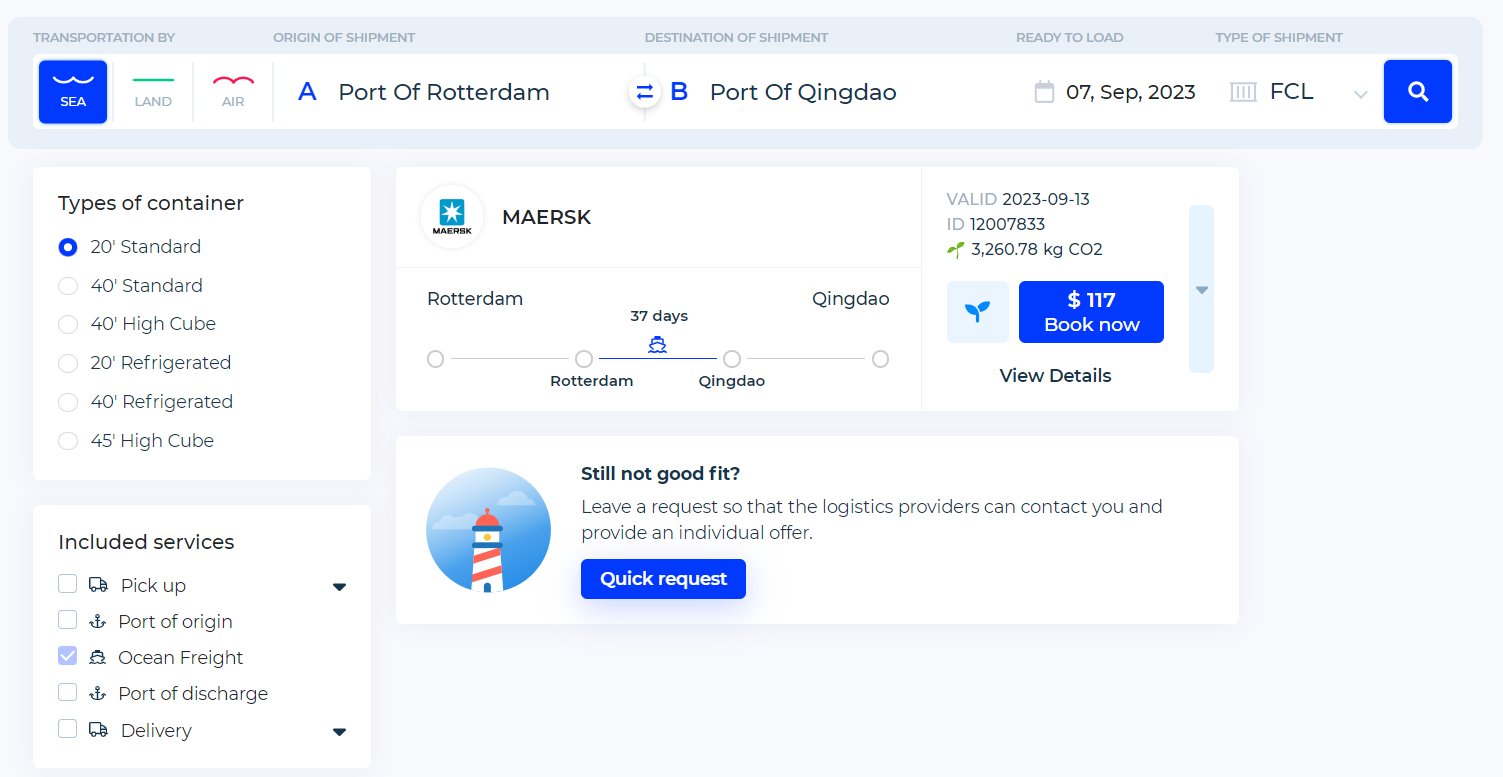
Moreover, you have the option to check out more shipping services and find out about their CO2 emission reductions:
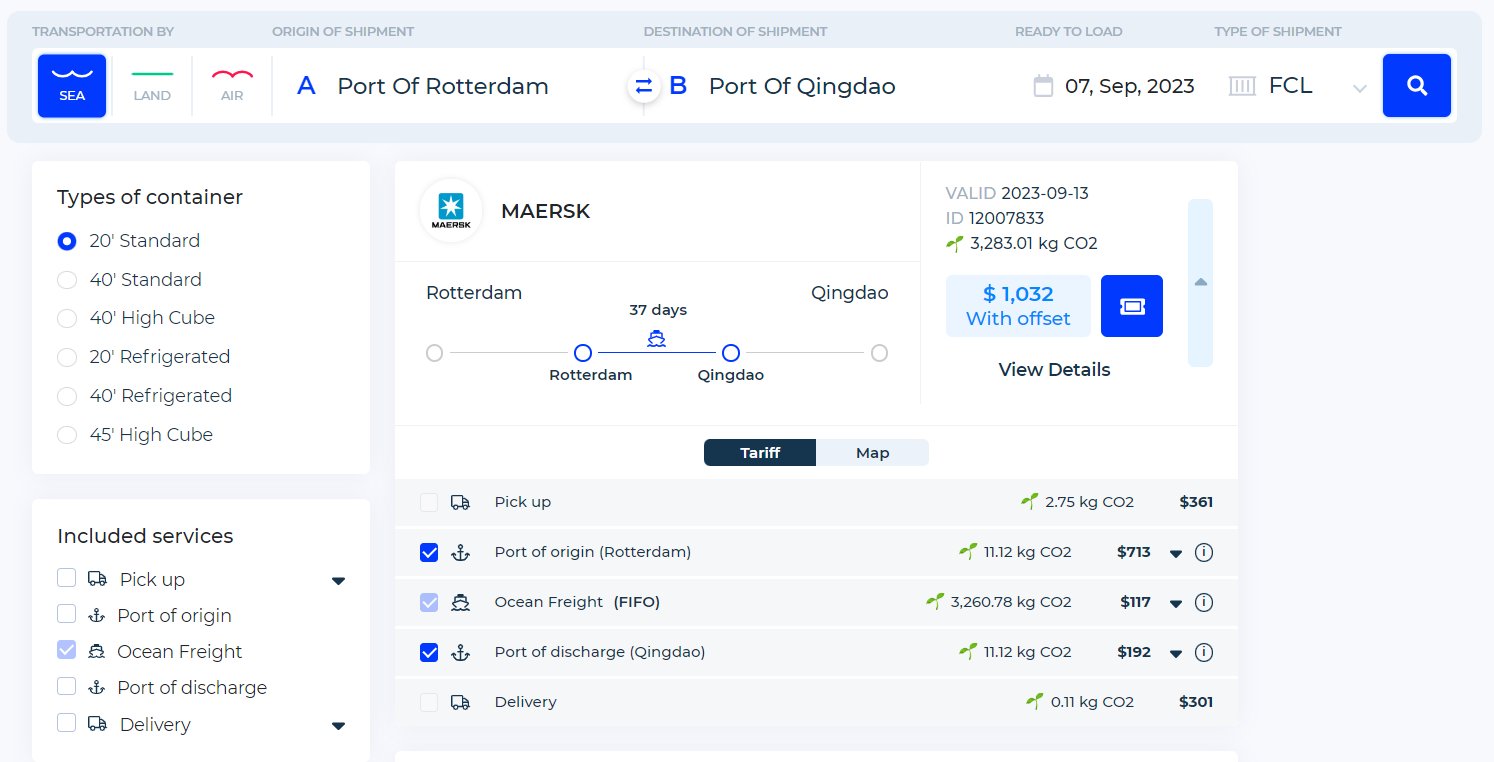
Request an IT quote, and our manager will contact you to provide details on how to integrate the SeaRates tools into your daily logistics processes.
Conclusion
Reducing CO2 emissions and achieving sustainable procurement practices for global industries are the goals of optimizing logistics processes. Regulatory requirements should not only be proposed but also supported by the shipping industry, which is developing digital logistics around the world.
The SeaRates team supports dissemination and provides opportunities for calculating analytical data for logistics processes. The use of IT solutions for transportation that provide accurate modeling and calculations is a fundamental way to develop a company's competitiveness in the logistics market today.

